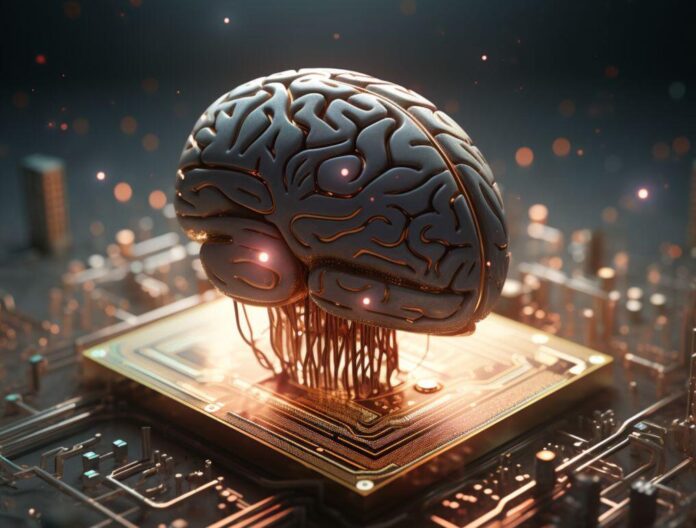In a breakthrough development, technology giant IBM has unveiled a prototype chip that could potentially transform the energy landscape of artificial intelligence (AI). Amid growing concerns about the carbon footprint associated with energy-hungry AI systems, IBM’s innovation promises to usher in a new era of energy-efficient AI processing.
At the heart of this innovation lies a revolutionary approach inspired by the human brain’s intricate workings. While traditional chips operate on digital principles of binary code (0s and 1s), IBM’s prototype employs components known as memristors, which function analogously and can retain a spectrum of values, much like the human brain’s synapses.
Dr. Thanos Vasilopoulos, a scientist based at IBM’s Zurich research lab, explained, “The human brain achieves remarkable feats of performance while consuming minimal power.” This unique efficiency opens up possibilities for executing complex tasks within power-constrained environments, such as smartphones, automobiles, and cameras. Additionally, cloud providers stand to benefit, as these chips could potentially mitigate energy costs and reduce carbon emissions associated with data centers.
Analogy-wise, memristors differ from digital chips much like a dimmer switch differs from a standard on-off switch. The analogy carries forward to their biological counterparts, as memristors closely mirror the behavior of synapses in the brain. Professor Ferrante Neri of the University of Surrey likened this approach to “nature-inspired computing that mimics brain function.” He noted that memristors could retain an electric history, similar to the way synapses store information in biological systems.

This innovation prompts speculation about the future of AI chips. The interconnected network of memristors resembles a biological brain, potentially leading to chips that mimic cognitive processes. However, experts warn that while promising, the road to memristor-based computers is fraught with challenges. Overcoming manufacturing hurdles and managing material costs will be crucial to widespread adoption.
What sets IBM’s prototype apart is its hybrid nature. It blends the efficiency of memristors with the familiarity of digital elements, making it relatively easy to integrate into existing AI systems. This adaptability is particularly relevant to devices like smartphones, which increasingly house AI chips to enhance functionalities such as image processing.
Looking ahead, IBM envisions a future where these chips revolutionize energy consumption. Phones and vehicles could become more energy-efficient, extending battery life and unlocking novel applications. Beyond personal devices, the real game-changer lies in their potential to replace power-hungry chips in data centers, which currently consume as much energy as mid-sized towns. As Professor James Davenport of the University of Bath observed, IBM’s prototype is a “potentially intriguing” first step, offering a glimpse of a more energy-efficient AI landscape on the horizon.





